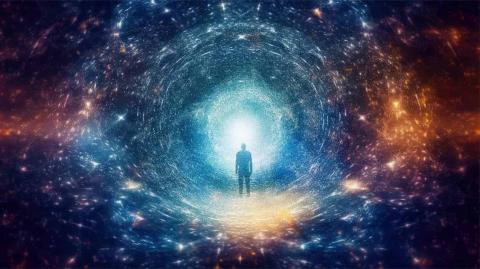Excerpt from an interview with Dr. Neil Dagnall by Alicia McDermott
Dr. Neil Dagnall is a Reader (Associate Professor) in Applied Cognitive Psychology in the Department of Psychology at Manchester Metropolitan University. He has been involved with the teaching and researching of the anomalous for over 20 years and is a strong advocate of public engagement and education in science. Neil’s research across a number of psychology domains is internationally recognized. He is a co-author of Ghosted! Exploring the Haunting Reality of Paranormal Encounters.
AM: Superstitions and curses have had a profound impact on cultures throughout history. Could you share one of your favorite modern examples that illustrates the far-reaching effects of such beliefs?
ND: I find the case of Robert the Doll fascinating. Robert is displayed at the East Martello Museum in Key West, Florida. He has a rich, detailed back story, and is supposedly possessed by evil spirits/forces. Robert is over a hundred years old, protected by a glass cabinet, and maintained within a controlled environment. He is resplendent in a sailor’s suit, sits in a chair, and holds a toy dog. Visitors flock to the museum to look at Robert because of his reputation for being cursed. Correspondingly, he has featured in television programs, documentaries, and a film.
Many visitors attribute post-visit misfortunes to failing to acknowledge Robert or disrespecting him. Others write forgiveness letters to avoid misfortune. Additionally, Robert receives fan letters/emails and presents (e.g., sweets for his apparently sweet tooth and donations). Robert is famous/infamous and has become a major celebrity. Indeed, Robert starred alongside William Shatner in a 2012 episode of ‘Weird or What?’ With the legendary actor/presenter apologizing for blowing a raspberry at a Robert duplicate. I think that demonstrates how powerful the narrative has become.
AM: Are there emerging trends in technology or psychology that you believe could provide new ways of examining parapsychological phenomena?
ND: There are always interesting developments and innovations. Unfortunately, these are stymied by the criticisms of sceptics and, due to a lack of consolidated research, prove difficult to replicate. This problem will persist until universities accept that parapsychological phenomena is worthy of study and allocate resources accordingly.
In our research, we try to extend and expand conceptualizations of belief and experience. These terms are often defined in simplistic ways that focus on similarities rather than differences. Hence, contrary to the prevailing tacit assumption, not all believers are the same. Rather believers are best viewed as a discrete set of sub-populations who vary in important ways. Moreover, belief, experience, and ability are often viewed separately rather than as a synergy of paranormal ascriptions that interact within the individual and delineate personal identity. These theoretical reframings will hopefully provide more nuance and appreciation of the psychology of paranormal belief and experience.
AM: What advice would you give to aspiring parapsychologists?
ND: I would focus on the discipline rather than the subject matter. It is important to develop research skills before seeking to apply them to subject matter. This is especially important with the paranormal since researchers are investigating elusive, difficult to establish, and/or contentious phenomena. Moreover, they are often doing this under either field or specially created environments. So rigor is paramount to avoid individual bias influencing processes and interpretation of results. It is well-known that there is a reporting bias, whereby skeptical researchers produce negative findings and believers produce positive outcomes. We try to avoid bias by adopting a psychological perspective and declaring our empirical preferences. Although we are happy to admit that we would be pleasantly surprised if widely accepted, compelling evidence of the paranormal was forthcoming.
Get the whole story: read the full interview in the September - October 2023 issue of Ancient Origins Magazine. Get it here!
Featured Image: Psychic waves representation. Source: AITTHIPHONG / Adobe Stock
By Alicia McDermott




